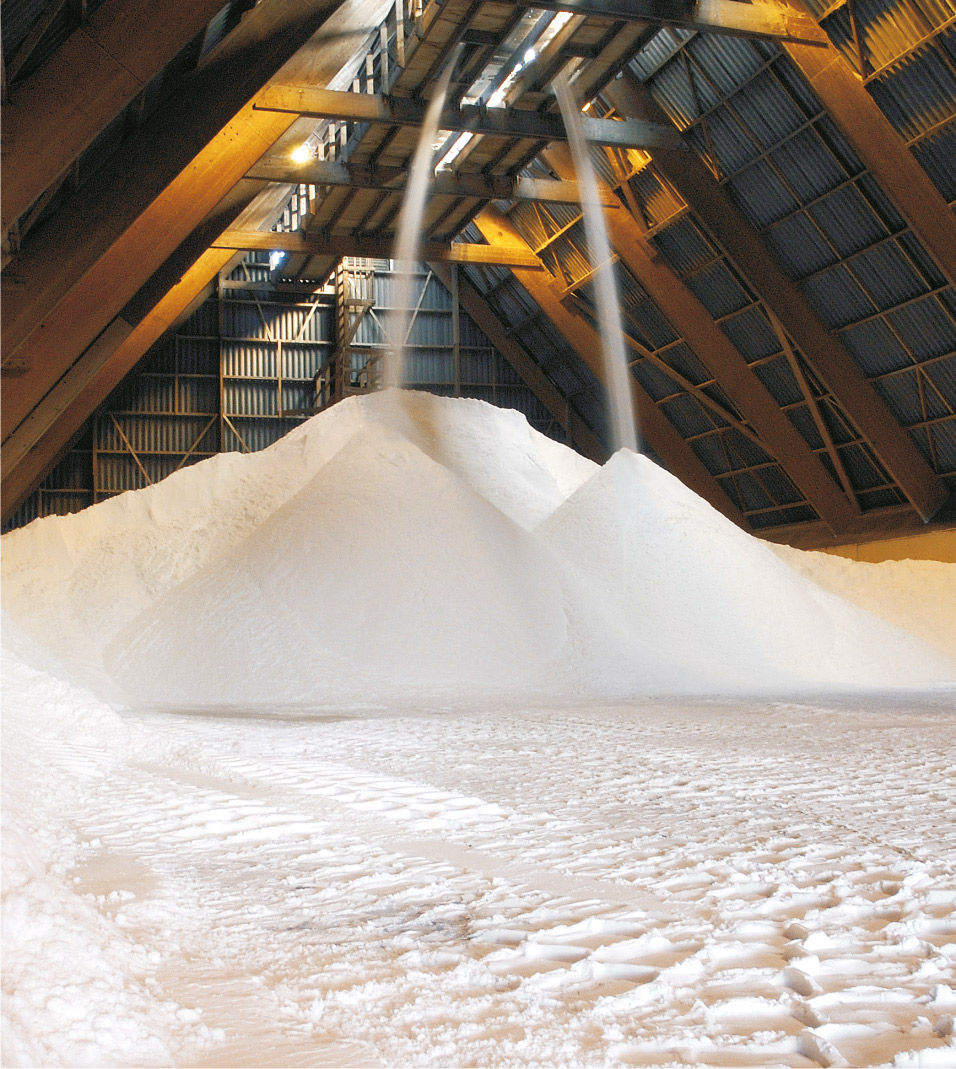Uses of Sodium Hydroxide
The biggest single use for sodium hydroxide in making organic chemicals is in the manufacture of epoxypropane, used in turn to make polyurethanes (Unit 67).
Much sodium hydroxide is used to scrub gases to remove acids. One example is in the purification of flue gases in the manufacture of sulfuric acid, where the alkali removes sulfur dioxide and sulfur trioxide from gases that are being emitted into the atmosphere (Unit 50). Similarly it is used to treat the effluent in the manufacture of titanium dioxide (Unit 51).
Another major use of sodium hydroxide is in the manufacture of paper from wood. In the most used process, the Kraft process, wood is treated with a solution containing a mixture of sodium sulfide and sodium hydroxide. Most of the unwanted material in the wood, such as the lignins, dissolve in the liquor, leaving relatively pure cellulose which is filtered off. It is this cellulose which is purified further that forms the basis of paper.
Other uses include the production of surfactants (Unit 19), soaps (Unit 18), and bleaches, the latter being usually produced by passing chlorine gas into a solution of sodium hydroxide, which generates a solution containing sodium chlorate(I) (sodium hypochlorite):


Figure 1 Uses of sodium hydroxide.

Figure 2 Purified bauxite being unloaded from a ship in Iceland, on its way to an aluminium extraction plant.

Figure 1 Sodium hydroxide is used in the purification of the ore, bauxite, prior to it being used to make aluminium (Unit 69). This picture shows stockpiling of recently mined bauxite ore at the Gove refinery in the Northern Territory, Australia.
Manufacture
Large deposits of sodium chloride (rock salt) are found in many parts of the world. These deposits are almost pure sodium chloride and are often several hundred metres deep (some are up to 3000 metres deep) with seams of 30 m to 500 m thick (Unit 25, Figure 2).
They were evaporated from trapped seas in the Triassic period, 200 million years ago. For example, in Europe, the seas produced deposits which stretch, although not continuously, from Cheshire, Lancashire, Staffordshire and Cleveland in the UK to Poland. It is also found throughout the US, particularly in Louisiana and Texas.
A small amount is mined as rock salt, the majority is solution-mined by the controlled pumping of water at high pressure into the salt seam. A proportion of the solution- mined brine produced in this manner is evaporated to produce dry salt.
Solar salt, produced by the evaporation of sea water using solar heating, is also a source of sodium chloride.
Saturated brine, prior to the electrolysis, is purified to precipitate calcium, magnesium and other detrimental cations by addition of sodium carbonate, sodium hydroxide and other reagents. The suspended solids are removed from the brine by settling and filtration.

Figure 4 Salt (sodium chloride) is being transferred to a large silo for storage, prior to being converted to chlorine and sodium hydroxide.
The 3x Electrolytic Processes
The three electrolytic processes employed today are described in detail in Unit 25. The concentration of caustic soda produced from each of the processes varies:
1 Membrane Cells
Caustic soda is produced as a pure ca 30% (w/w) solution which is normally concentrated by evaporation to a 50% (w/w) solution using steam under pressure.
2 Mercury Cells
Caustic soda is produced as a pure 50% (w/w) solution, which is the concentration most commonly sold on the world market. Some is concentrated by evaporation to 75% and then heated at 750-850 K to obtain solid sodium hydroxide.
3 Diaphragm Cells
The caustic soda is produced as an impure solution called ‘diaphragm cell liquor’ (DCL) with typical concentrations 10-12% (w/w) sodium hydroxide and 15% (w/w) sodium chloride. In order to produce the required 50% (w/w) strength that is usually required, the DCL has to be concentrated using evaporation units that are much larger and more complex than those used on membrane cell plants.
Large quantities of salt are precipitated during this process, which is normally reused to produce a saturated brine feed to the cells. An additional aspect of the sodium hydroxide produced in the diaphragm cell is that the product has a small amount (1%) of salt present as a contaminant, which may make the material unsuitable for some purposes.
